- Home
- Robert Harris
Selling Hitler Page 11
Selling Hitler Read online
Page 11
Two weeks later, during one of Fritz Stiefel’s regular visits to Aspergstrasse, Kujau brought out the book and laid it on the table in front of him. ‘That,’ he told him, ‘is a Hitler diary.’
Stiefel examined it carefully. ‘He was not so much fascinated by the contents,’ said Kujau, ‘as by the initials I’d stuck on the front of it.’ He asked if he could borrow it and Kujau agreed. ‘I took it home with me and read through it,’ recalled Stiefel. He then locked the book away in his safe with the rest of his faked Hitler manuscripts.
At around the same time that he received the diary from Kujau, Stiefel decided that the time had come when he should seek an expert’s opinion on his remarkable Hitler archive. He asked Kleenau, a firm of Munich auctioneers who handled important manuscripts, if they could recommend an authority on Hitler’s art and writing. Kleenau gave him the name of August Priesack.
‘Professor’ Priesack, as he styled himself, had been employed by the Nazi Party between 1935 and 1939 to track down Hitler’s paintings. His task was to buy up as many as possible and sort out the genuine Hitlers from the fakes which, even then, were polluting the market. For Priesack, as for so many of the ‘Keepers of the Flame’, those years in the sun before the war, when he was young and enjoying the patronage of the Führer, represented the best time of his life. He had piles of yellowing press cuttings and photographs from the Third Reich, his private archive, stored in his cluttered Munich apartment. He was seventy-six years old, a former secondary school teacher, listed in the Munich police records as a well-known sympathizer with the ideals of the Hitler era. He was working on a book of previously unpublished pictures of the Nazi Party rallies. He had also been hired by the American millionaire Billy Price who was compiling a complete catalogue of Hitler’s art. Stiefel invited Priesack to visit him in Stuttgart and evaluate his own collection.
For Kujau, this was a decisive moment. Hitherto he had had to fool only amateur enthusiasts. Now his work was to be judged by a supposed expert. In May 1978 he had signed an agreement with Stiefel guaranteeing that everything he had sold him to date and might sell him in the future was ‘original’ and ‘contemporary’. Under the terms of the contract, if anything turned out to be fake, Kujau had to give Stiefel a complete refund. A great deal therefore depended upon Priesack’s verdict. He need not have worried. The old man took one look at Stiefel’s collection and declared it to be of ‘great historical significance’. He pointed to a watercolour. ‘I last held that in my hands in 1936,’ he told Stiefel and Kujau. ‘It was then,’ said Kujau later, ‘that I knew what kind of an expert he was. I had only finished that painting ten days before.’
Priesack was sufficiently impressed to contact one of Germany’s leading authorities on Hitler: Eberhard Jaeckel, Professor of Modern History at the University of Stuttgart. Jaeckel, the author of Hitler’s Weltanschauung, A Blueprint for Power, had been engaged for some years in the compilation of a complete collection of Hitler’s writings from 1905 to 1924. Priesack had passed on to him some material from his own archive in 1974 (subsequently dismissed by Jaeckel as ‘a few pieces of paper, copies, without any value’). Now he urged the historian to meet with Stiefel and his astonishingly well-connected supplier, Herr Fischer. Jaeckel, aware that important Hitler documents were in the hands of a number of private collectors, agreed. An appointment was arranged for Friday, 21 September 1979.
Priesack arrived at Stiefel’s house before Kujau and Jaeckel. For the first time the industrialist opened his safe and showed him the Hitler diary. Priesack spent an hour reading through it. He was hugely impressed by the existence of such a book, although he had to confess to a certain disappointment in its contents. (Kujau had filled it almost entirely with lists of appointments and proclamations lifted out of the Nazi yearbook.) He made a few notes. ‘I can only remember one page which I copied,’ recalled Priesack. ‘The others were really for the most part just headlines from the Völkischer Beobachter [the Nazi Party newspaper].’ The fullest entry, the one written down by Priesack, was for 30 June 1935:
The explosion catastrophe in Reinsdorf is all I needed. One ray of hope today was the dedication ceremony of the House of German Art in Munich.
But at any rate I can relax a bit with the architects. E. [Eva Braun] now has two little puppies so time does not lie too heavily on her hands.
Must have a word with E. about Goering, too. His attitude towards her just isn’t correct.
All quiet on the health front.
Despite the triviality of the content, Priesack had no doubts that the book was genuine. When Kujau arrived he paid him an emotional tribute. ‘You are our salvation,’ he told the former waiter and window cleaner. ‘You must find more documents. History will thank you.’
Jaeckel was also impressed by Stiefel’s collection as the industrialist laid it out before him. ‘There were drawings, paintings and documents signed by Hitler,’ he remembered. He was handed the diary and ‘leafed through it quickly’.
I remember a place where Eva Braun and a dog were mentioned. As far as I recall, only the right-hand pages were written in ink and signed by Hitler…. I was told it came from East Germany and had been kept there since 1945. The question of how it was brought to the West was not answered – I was told it could be dangerous to the people who’d brought it out. It was also suggested to me that there was a senior official involved in East Germany called Fischer.
Kujau watched Jaeckel going through the book. There was a discussion about how many more diaries there might be. Kujau said that he understood from his sources in East Germany that the diaries spanned thirteen years, from 1932 to 1945. Priesack cut in: assuming that each of the missing books also covered six months, there would be twenty-seven books in total. Jaeckel urged Stiefel to try to obtain them. Kujau claimed later to have sat and listened to all this ‘in amazement’.
Jaeckel’s particular interest was in material up to the year 1924. Stiefel had plenty to show him, including some previously undiscovered poems by Hitler written during the First World War. These included ‘It was in a thicket of the Artois Forest’, an illustrated ballad, and ‘An Idyll in the War’, a work in four verses in which ‘Hitler’ described how a German soldier delivered a Frenchwoman’s baby:
As the medical orderly Gottlieb Krause heard as he came through Arras,
The sudden dull cry of a woman from the closest house:
I must help! was his thought, even a German in the field remains helpful,
And a newborn baby Frenchman arrived in the world with Gottlieb Krause’s help.
And with his typical great care he looked after the child,
Washed it, cared for it, to show we’re not barbarians
And held the babe with pleasure in front of his comrades;
This little worm knows nothing of Iswolski and Delcassé’s intrigues!
Milk was rare and needed in a hurry; in the meadow grazed a cow,
And two soldiers from the next troop commandeered her at once,
And milked her! It ran in spurts and in rich amounts,
Shrapnel fell close by but didn’t stop the work.
Right afterwards, he gave the bottle to the child he had delivered,
And pulled two zwieback out of his pocket for the mother
An idyll proving once again the German’s noble creed,
If the Limeys haven’t destroyed it, the house is still there.
Each verse had an accompanying illustration: the soldier tending the mother and her baby; the soldier showing the baby to a comrade; the soldier milking a cow; the soldier saying goodbye to the Frenchwoman with the child in her arms. Jaeckel saw no reason to believe it was not genuine. Attached to it and to most of the other pieces in Stiefel’s collection was an ‘authentication’ on official Nazi Party stationery. The following year, Jaeckel reprinted ‘An Idyll in the War’ in his book of Hitler’s early writings, along with seventy-five other forgeries produced by Kujau.
At the end of this productive meeting,
Jaeckel gave Kujau a lift back into Stuttgart. The ‘antiques dealer’ had scarcely opened his mouth all afternoon. He struck the historian as ‘reserved’ and ‘uneducated’. Jaeckel told him that if he could discover any more volumes of Hitler’s diaries, he would very much like to edit them.
Kujau was by now leading a life of bewildering complexity. He was running the shop in Aspergstrasse. He was organizing the illegal export of memorabilia from East Germany. He was forging documents and paintings. He was still nominally in charge of the Lieblang Cleaning Company. He was answering to at least two different names. And as if this was not enough, he had now begun deceiving Edith by taking a full-time mistress.
Kujau’s corpulent figure had long been familiar to the working girls of Stuttgart’s red-light district where he was universally known as ‘The General’. His favourite haunts were the Pigalle night club and the Sissy Bar. Using the money he was making from Nazi memorabilia, he entertained lavishly. The girl he was with was always well paid; the others were regularly bought bottles of champagne. In March 1975 he met Maria Modritsch, a twenty-five-year-old Austrian girl who was serving drinks in the Sissy Bar. She had left school at fifteen to work in a factory, come looking for work in West Germany and ended up as a bar girl. She was thin, quiet and of homely appearance. Kujau took a liking to her and they began what Maria primly called an ‘intimate relationship’. She gave up work in the Sissy Bar and in May 1978, he set her up in an apartment in Rotenbergstrasse where she lived alone with her pet rabbit, Caesar. Kujau had a key, kept some clothes in the flat, and provided Maria with a monthly allowance of between 1000 and 2000 marks. ‘Conny gave me a loan for the furniture,’ said Maria. ‘He had more money than I did and he spoiled me. He visited me almost every day. We would go out together. Then he would go back to his own flat. From time to time he’d stay overnight. As far as I’m aware, Edith didn’t know about my existence.’ Kujau told Maria he was married to Edith. ‘It was not until later,’ said Maria, ‘that I learned he only lived with her.’ She helped out in the shop occasionally and was under the impression that her lover was some sort of painter.
Three weeks after the meeting with Jaeckel and Priesack, on 15 October, Kujau and Maria went out for a drink. After some schnapps in the Korne Inn they moved on to the Melodie Bar. Shortly before midnight, a group of immigrant workers, Yugoslavs, burst into the bar brandishing guns. While most of the clientele threw themselves to the floor, Kujau, in a fit of drunken bravado, leapt to his feet and attacked them. In the ensuing struggle he was struck on the head and had to be taken to hospital with blood streaming from a three-inch gash in his forehead. He was interviewed by the police and once again could not resist spinning them a story. He was ‘Dr Heinz Fischer’, Maria was his secretary, he worked for the Baden-Wuerttemberg authorities. When this was checked and found to be false, he lied again. He was ‘Dr Konrad Kujau’, until last year a colonel in the West German army, and soon to become a professor. The police searched a briefcase he had with him and found artists’ materials, an air pistol and a photograph of himself posing in the full dress uniform of a general. Kujau said that he had bought the pistol at an auction. He confided to the policeman interviewing him that it had once belonged to Field Marshal Rommel. The policeman told his colleagues that Kujau was either mentally unstable or a military fanatic.
This curious episode was not over yet. Less than a week later, Kujau was invited to return to the police station to explain why he was going around falsely claiming to have a doctorate. Charges were laid against him for misrepresentation. Even the most blatant confidence trickster would by now have given up, but Kujau swore that he was the author of eleven books on Nazi Germany, including Adolf Hitler the Painter, Adolf Hitler the Frontline Soldier, Adolf Hitler the Officer, and a five-volume study, Adolf Hitler the Politician – all published by the Ullstein company in Munich. He declared that as a result of his work he had been invited all over the world to lecture on the Nazis; he possessed not merely one but three doctorates, awarded to him by the universities of Tokyo, Pretoria and Miami. The incredulous police asked him for proof of these honours.
The documents [stated Kujau] are at home, but my office is currently being renovated and everything is packed in cartons.
These documents are also in the cartons and therefore I cannot show them to you at the moment. I shall have them photocopied and sent to you as soon as the renovation work is finished. I should mention that although I received my award from the University of Tokyo in 1977, the date on the document is 1952. This is because in Tokyo the year 1952 corresponds to our 1977.
The police waited but the documents never materialized. The following July, Kujau was fined 800 marks for the misuse of titles. He described his occupation in court for the first time as ‘painter’.
On 20 October 1979, five days after the fight in the Melodie Bar, ignorant of his supplier’s difficulties with the police, Fritz Stiefel invited Kujau and Edith to his house for a party. The celebration was supposed to be in honour of the birthday of Frau Senta Baur, wife of Hans Baur, but at the last moment Frau Baur was unable to attend. As a result there were only six guests: the Stiefels, Kujau and Edith, and the former SS man Jakob Tiefenthaeler and his wife.
It was a convivial evening. Stiefel had known Tiefenthaeler as a fellow collector for several years; Kujau had been introduced to Tiefenthaeler as ‘Herr Fischer’ by Stiefel over dinner the previous March, although on that occasion, said Tiefenthaeler, Kujau ‘had kept very much in the background’. This evening was different: the drink flowed, and as the number of empty bottles steadily mounted, so did Kujau’s loquacity. ‘He said that he was a businessman,’ recalled Tiefenthaeler.
Then later he explained that he had an antiques shop in Stuttgart. He told me that he didn’t have any employees there, that he was often away travelling, that for much of the time the place was shut. He also boasted that evening of his good contacts in East Germany. In this connection he told us that his brother was a general in the East German border service: he had a great deal of authority but that wouldn’t exempt him from punishment if he was found to be involved in something illegal.
After a few more glasses, Kujau began talking about the Hitler diaries. According to Tiefenthaeler he boasted that ‘he could bring to the West diaries which had been on board one of the Führer’s planes’ which had crashed in East Germany at the end of the war.
These diaries had been hidden in a safe place by local peasants. He said there were 27 volumes, but he could only bring them out to the West one at a time. They had to come out at intervals of between one and two months: more journeys than that would be suspicious.
Tiefenthaeler, whose own Third Reich collection was largely built around autographs and pictures, was fascinated.
This is the first occasion on which Kujau is reported to have used the plane crash to explain the provenance of the diaries. When he had given the first diary to Stiefel sixteen months earlier he had merely said that he had ‘got it from East Germany’ along with his other militaria. At the meeting with Jaeckel only four weeks earlier he had been equally vague. This suggests that at some point in the period 21 September to 20 October, Kujau discovered the story of the crash.
According to Stiefel, he and Kujau had visited Hans Baur at his home in Herrsching some time around September 1979. Priesack had also been there. ‘It was in the evening,’ said Baur, ‘and my wife and I went with them to have dinner in a neighbouring village.’ Baur subsequently claimed to have no recollection of discussing the loss of Gundlfinger’s plane, but the coincidence of this meeting with Kujau’s adoption of the story suggests otherwise. Stiefel admitted to the police that he had certainly heard an account of the crash from Baur himself. Kujau, on the other hand, alleged he had first learned of it from August Priesack, and Priesack, who knew of the crash from Baur’s book, afterwards admitted that he could have been the one who first put the idea in Kujau’s mind. Whichever version is the truth – and it should be remembered that in Baur�
�s book the whole episode had been available in outline to anyone who was interested since 1955 – this was the decisive moment in the evolution of the fraud. Suddenly to produce a Hitler diary and claim it had been smuggled out of East Germany might be enough to satisfy collectors as gullible as Stiefel. To produce that diary and also to be able to point to Hitler’s distress at the loss of valuable documents in a mysterious air crash – that suddenly made the story seem much more plausible.
At the end of the evening’s festivities, Stiefel put his guests up for the night. The following day was a Sunday. After breakfast the industrialist unlocked the metal door to his collection and showed Tiefenthaeler the diary. A few weeks later, Tiefenthaeler told Gerd Heidemann what he had seen and at the beginning of 1980, Heidemann himself visited Stiefel, saw the diary and heard the story of the crashed Junkers 352.
What gives Kujau’s fraud from this point onwards a touch of real genius is that having made the connection between the wrecked transport plane and the diaries, he left it to others to research the background. Never did the victim of a hoax work more assiduously towards his own entrapment than Gerd Heidemann. While Kujau shuttled between his two mistresses and tended his shop in Stuttgart, it was the reporter in Hamburg who worked long hours and even risked dismissal to make the story of the diaries credible. For Heidemann, each step in his attempts to prove that the diary he had seen at Stiefel’s could be genuine represented an additional investment of time and effort. It is not surprising that by the end he wanted to believe in the existence of the diaries so desperately: by then he had put more work into them than Kujau. It took him a year, but gradually, in 1980, the two men’s paths began to converge.

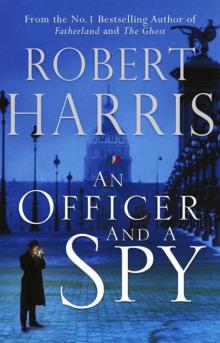 An Officer and a Spy
An Officer and a Spy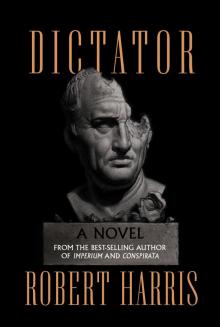 Dictator
Dictator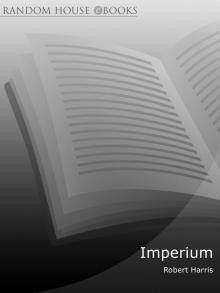 Imperium:
Imperium: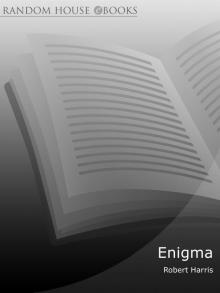 Enigma
Enigma Fatherland
Fatherland Dictator:
Dictator: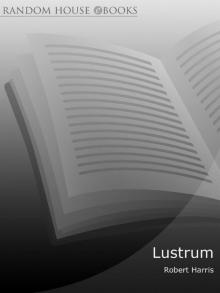 Lustrum
Lustrum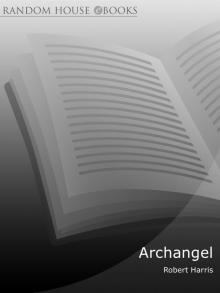 Archangel
Archangel Conclave
Conclave The Fear Index
The Fear Index The Second Sleep
The Second Sleep V2
V2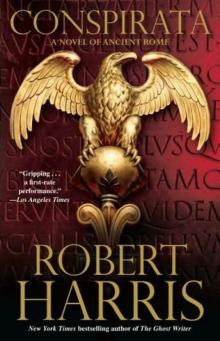 Lustrum c-2
Lustrum c-2 Imperium
Imperium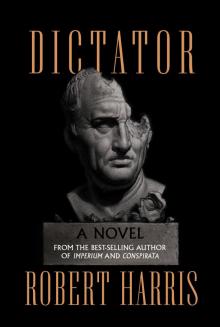 The Dictator
The Dictator Selling Hitler
Selling Hitler Archangel (Mass Market Paperback)
Archangel (Mass Market Paperback)